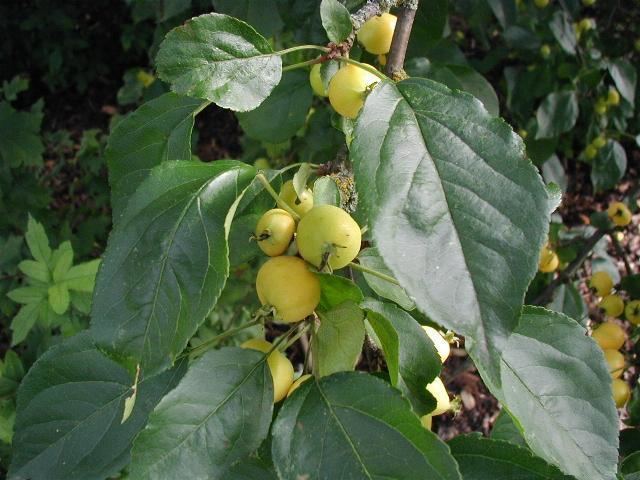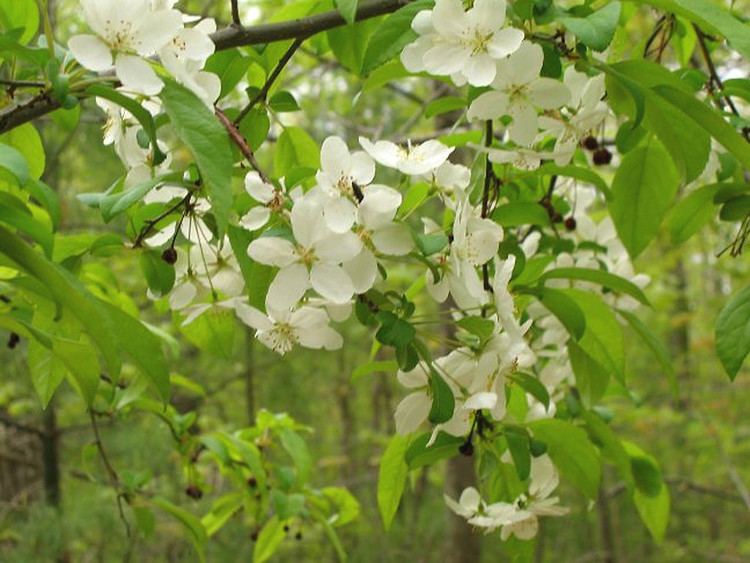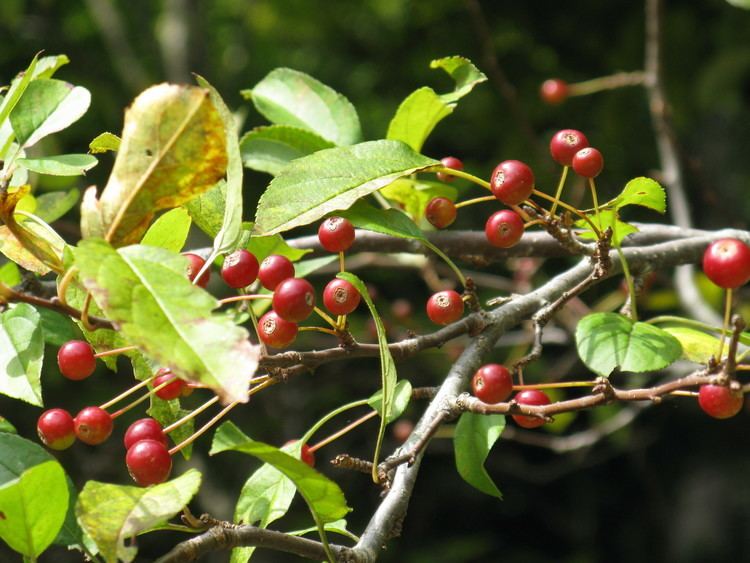Scientific name Malus baccata Rank Species | ||
 | ||
Similar Apples, Malus floribunda, Malus prunifolia, Malus sieboldii, Rosaceae | ||
Wild apple (lat.: Malus baccata) is an Asian species of apple known by the common names Siberian crab apple, Siberian crab, Manchurian crab apple and Chinese crab apple. In the forests across Europe, today also grow a few varieties of wild apples. It is native to much of northern Asia, but is also grown elsewhere as an ornamental tree and for rootstock. It is used for bonsai. It bears plentiful fragrant white flowers and edible red to yellow fruit of about 1 cm diameter.
Contents

Distribution and habitat

Malus baccata is native to Russia, Mongolia, China, Korea, Bhutan, India and Nepal, where it is common to mixed forests on hilly slopes at elevations up to 1500 meters (5000 feet). The tree is found in Japan, and it has also been introduced to Europe and to North America, where it is found in the wild mostly in the Great Lakes Region and in the Northeastern United States.
Features

Trees grow up to 10–14 meters (33-47 feet) high. They have arching or overhanging red-brown branches and red-brown buds. Petioles are 2–5 cm (0.8-2.0 inches) long, with few glands. Leaves are elliptic or egg-shaped, (3–8)×(2–3.5) cm ((1.2-3.2) × (0.8-1.4) inches). Pedicels are slender and 1.5–4 cm (0.5-1.6 inches) long. They bear white fragrant flowers of 3–3.5 cm (1.2-1.4 inches) in diameter which groups by 4–6. Petals are white and egg-shaped, approximately 2–2.5 cm (0.8-1.0 inches) long. Fruits are red to yellow and spherical, only about 1 cm (0.4 inches) in diameter; they form dense clusters and resemble cherries from a distance. Flowering occurs in spring, with fruits appearing in September–October.
Subordinate taxa
The subordinate taxa include

Uses

Malus baccata is used as ornament for its flowers and fruit. Fruits are edible and are eaten fresh or dried. As one of the tallest and most resistant to cold and pest species of its genus, M. baccata is used for experimental breeding and grafting of other crabapples and domesticated apples as well. In particular, it is a common genetic source for M. pumila and M. asiatica in northern and north-eastern China. M. baccata var. mandshurica is used for bonsai.
